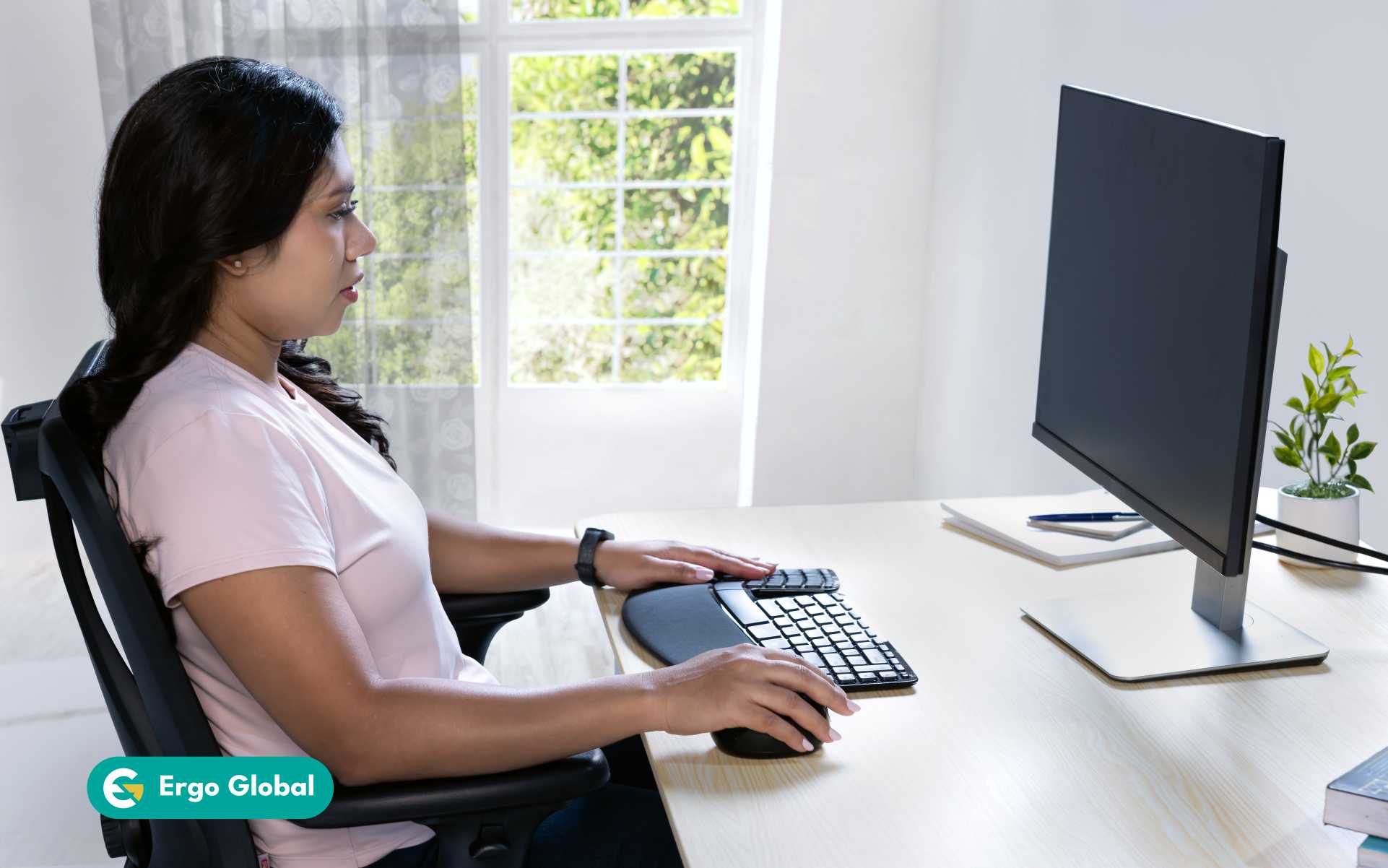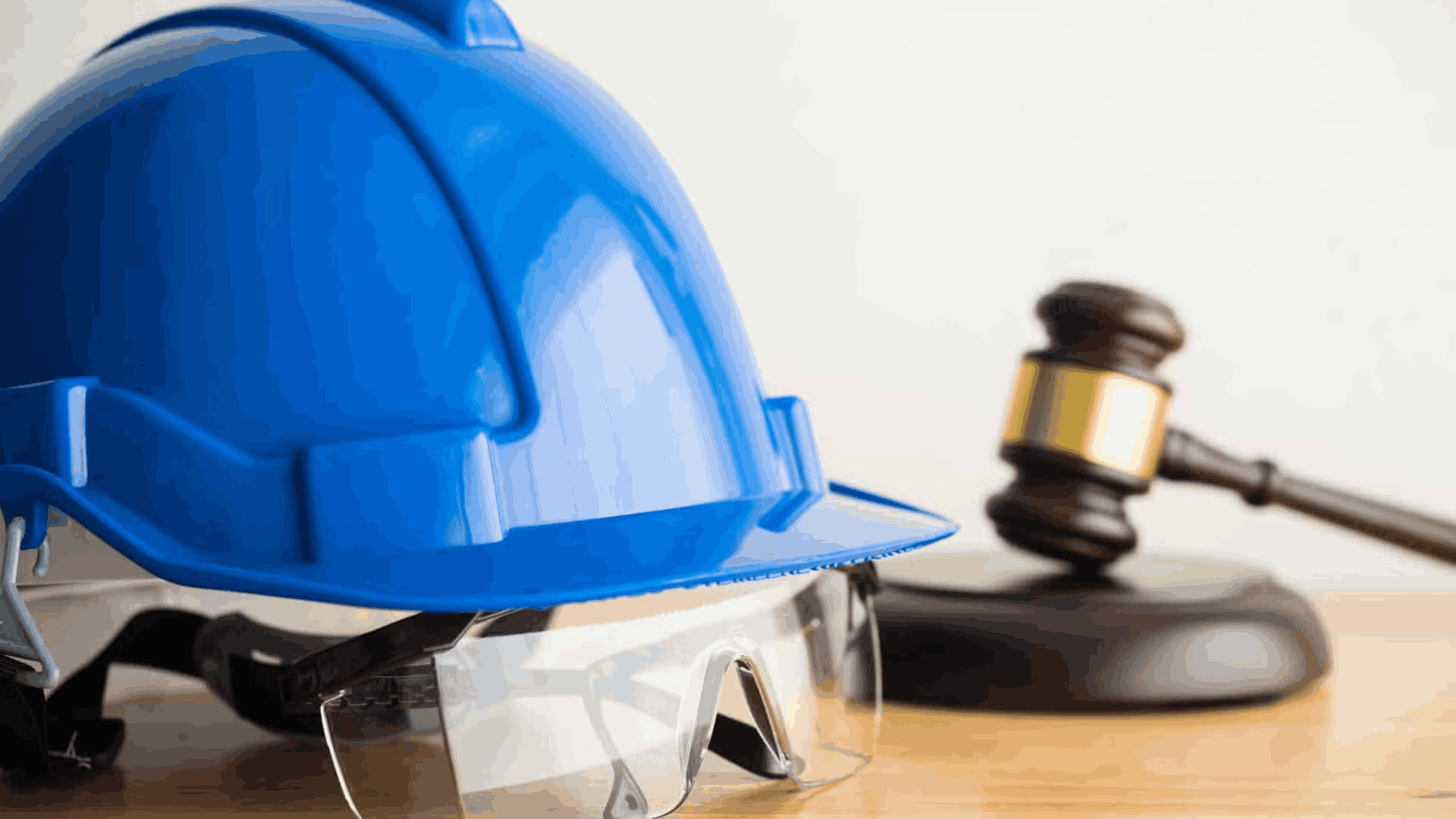Table of contents:
2. What is a workstation self-assessment?
3. The components of a workstation ergonomics self-assessment checklist
3.3 Questions about the keyboard and mouse
4. The importance of workstation ergonomics self-assessment
5. What happens after the self-assessment?
6. Maximising business potential through your employees’ ergonomics self-assessment
Did you know the average direct cost of a workers’ compensation claim for a musculoskeletal disorder (MSD) is $14,120? When considering the indirect costs involved, the total average claim cost rises to well over $32,000. These staggering costs can severely impact your business, potentially leading to financial strain and a decline in overall productivity and employee morale.
Fear not! These alarming costs can be mitigated by conducting a workstation ergonomics self-assessment. When you proactively evaluate and enhance the ergonomics of your employees’ work environment, you can effectively reduce the risks associated with MSDs and safeguard your business from the financial burden and productivity decline they may cause.
Embracing ergonomic self-assessment not only fosters a healthier workplace but also elevates employee satisfaction and efficiency, ultimately contributing to the enduring success of your business.
Feel free to explore our other blog content, where you can find a variety of ergonomics checklists tailored to different settings and needs.
In this blog, you will learn more about the ergonomic self-assessment checklist, which you can encourage your employees to do.
What is a workstation self-assessment?
The workstation ergonomics self-assessment is designed to help your employees evaluate your computer setup and make easy adjustments to enhance their comfort. It allows them to optimise their workstations based on their personal preferences and needs, ensuring that they feel more at ease while working.
As an employer, it’s essential to recognise the importance of creating a dialogue with your workers about their workstation ergonomics. Encouraging open communication and providing resources for self-evaluation can empower your team to take charge of their well-being.

It’s also crucial to acknowledge that workstation ergonomics self-assessment is not limited to traditional office settings. With the rise of remote work and flexible working arrangements, employees increasingly work from home or other non-traditional locations.
The ergonomic self-assessment checklist we will discuss is designed to be versatile, catering to both traditional office spaces and home office environments. This adaptability ensures that your staff can optimise their workstations and maintain comfort and productivity, regardless of their chosen work setting.
The components of a workstation ergonomics self-assessment checklist
The workstation ergonomics self-assessment checklist is a valuable tool that focuses on vital aspects of an employee’s work environment. By examining each component through a series of targeted questions, your workers can identify areas for improvement and make necessary adjustments to their chairs, desks, keyboards, and mice.
Questions about the chair

- Can you adjust the seat height?
- Can you modify the height and angle of the backrest?
- Is the chair stable?
- Does it allow movement?
- Is the chair in a good state of repair?
- If your chair has arms, do they get in the way?
These questions about the chair in the workstation ergonomics self-assessment checklist address key aspects of comfort, support, and functionality. These considerations are crucial to ensuring that your employees maintain proper posture and avoid undue strain on their muscles and joints while working. A well-designed chair can significantly reduce the risk of developing musculoskeletal disorders, which can lead to long-term health issues and decreased productivity.
The first three self-assessment questions focus on the adjustability and stability of the chair. Adjusting the seat height and the backrest allows your employees to tailor the chair to their specific needs, ensuring proper support for their lower back and promoting good posture. A stable chair is vital for maintaining balance and preventing accidents. The following two questions assess the chair’s ability to allow movement and its overall state of repair. A chair that permits movement can help prevent stiffness and encourage healthy circulation, while a well-maintained chair ensures that all components function as intended. Lastly, the question about armrests highlights potential obstructions that could impede comfortable typing or mouse use, leading to strain on the wrists and arms.
Explore our comprehensive blog about choosing the correct ergonomic chair.
Questions about the desk

- Is the desk surface large enough to place all your equipment where you want it?
- Is the height of the desk suitable?
- Does the desk have a matte surface (non-reflectant)?
- If you cannot place your feet flat on the floor whilst keying, has a footrest been supplied?
These questions about the desk in the workstation ergonomics self-assessment checklist tackle essential aspects of workspace organisation, height, and surface properties. These factors create an efficient and comfortable work environment, enabling your employees to perform tasks with ease and maintain proper posture, ultimately reducing the risk of musculoskeletal discomfort and injury.
The first desk-related question focuses on the desk’s surface area, promoting a well-organised workspace. The second self-assessment question emphasises the importance of appropriate desk height to prevent neck, shoulder, and back strain. The third question pertains to the desk’s surface properties, specifically its reflectance, to minimise glare and eye strain. Lastly, the question about footrests highlights the need for proper leg and foot support, especially when the desk height cannot be adjusted, for increased comfort and reduced fatigue.
Explore our essential tips for setting up an ergonomic computer workstation.
Questions about the keyboard and mouse

- Is the keyboard separate from the screen?
- Can you raise and lower the keyboard height?
- Can you easily see the symbols on the keys?
- Does the mouse fit with your hand?
- Is there enough space for the keyboard and mouse use?
These questions about the keyboard and mouse in the workstation ergonomics self-assessment checklist focus on the usability, placement, and adjustability of these essential input devices. Proper keyboard and mouse configuration prevent repetitive strain injuries and ensures a comfortable and efficient work experience.
The first keyboard and mouse question addresses the separation of the keyboard from the screen, which allows for independent adjustment of both components to achieve optimal viewing and typing positions. This separation helps prevent strain on the neck, shoulders, and wrists. The second self-assessment question pertains to the adjustability of the keyboard height, which enables your staff to find a comfortable typing position that reduces strain on their wrists and arms. The third self-assessment question focuses on the visibility of the symbols on the keys, ensuring that your workers can easily identify and access the keys without straining their eyes or making excessive movements. The fourth question evaluates the fit of the mouse with the user’s hand, as a properly sized mouse can prevent strain on the fingers and wrist. Finally, the last question assesses the available space for keyboard and mouse use, emphasising the importance of adequate space to move and operate the input devices without causing discomfort or strain on the user’s hands, wrists, and arms.
While self-assessment is a valuable step towards improving ergonomics, it’s essential to recognise the benefits of consulting with professional and experienced Ergonomists. These experts possess the knowledge and expertise to optimise checklists and ensure even better results. Check out our Individual Virtual Ergonomic Assessment. It’s a one-to-one ergonomics evaluation either in person or over video conferencing with our Ergonomists. This service also optimises the home office ergonomics checklist.
The importance of workstation ergonomics self-assessment

Workstation ergonomics self-assessment offers numerous benefits, including improved employee comfort, increased productivity, and reduced risk of work-related injuries. By identifying and addressing potential concerns in the work environment, your workers can tailor their workstations to their specific needs, promoting proper posture and minimising strain on muscles and joints. Additionally, self-assessment empowers them to take control of their workspace, fostering a sense of ownership and responsibility for their well-being.
Without conducting a workstation self-assessment, they may be unaware of potential ergonomic issues in their work environment, leading to discomfort, reduced productivity, and an increased risk of developing musculoskeletal disorders. Prolonged exposure to poorly designed workstations can result in chronic pain, long-term health issues, and increased absenteeism. Moreover, a lack of self-assessment can increase healthcare costs and workers’ compensation claims for your business.
The Occupational Safety and Health Administration (OSHA) computes that employers spend $15 to $20 billion annually on workers’ compensation costs related to MSDs. Implementing workstation ergonomics self-assessments can significantly reduce these costs, with studies showing that proper ergonomics interventions can lead to a 25% decrease in MSD-related workers’ compensation claims and a 67% reduction in lost workdays.
A study revealed a significant decrease in musculoskeletal disorders (59%), incidence rate (65%), lost workdays (75%), restricted workdays (53%), worker’s compensation costs (68%), costs per claim (39%), and labour costs (43%). Furthermore, implementing effective ergonomic solutions led to a 25% increase in productivity.
What happens after the self-assessment?
After completing a workstation ergonomics self-assessment, you and your employees should take the following actions to address any identified issues and optimise their work environment:
- Review the self-assessment results: Analyse the self-assessment findings to pinpoint improvement areas and prioritise the most urgent issues.
- Implement changes: Make necessary adjustments to the workstation based on the self-assessment findings. This may include modifying the desk height, adjusting the chair, repositioning the keyboard and mouse, or investing in ergonomic accessories such as wrist rests and footrests.
- Monitor progress: Continuously evaluate the effectiveness of the implemented changes and their impact on comfort, posture, and overall well-being. Regularly reassess the workstation to ensure that it remains ergonomically sound.

- Seek professional guidance: If the self-assessment reveals complex issues or if the employee is unsure about the best course of action, consulting a professional Ergonomist can provide valuable insights and recommendations. Professional ergonomists have specialised knowledge and experience in optimising work environments to promote employee health, safety, and productivity.
Professional Ergonomists can help optimise the self-assessment by:
- Providing expert advice on ergonomic best practices and tailored solutions for specific workstations and job tasks.
- Conducting in-depth evaluations of the work environment, including physical, cognitive, and organisational factors that may contribute to ergonomic issues.
- Identifying potential risks and hazards that may not be apparent during a self-assessment, ensuring a more comprehensive approach to workstation ergonomics.
- Offering training and education on proper ergonomic techniques and strategies, empowering workers to maintain a safe and comfortable work environment.
By incorporating the expertise of professional Ergonomists, employees can optimise the benefits of their office ergonomics self-assessment and create a work environment that promotes health, comfort, and productivity.
To gain more profound ergonomic knowledge, book a session on our Ergonomic Trainings today!
Maximising business potential through your employees’ ergonomics self-assessment
A well-executed ergonomics self-assessment, complemented by professional intervention, can significantly improve employee comfort, health, and productivity. Self-assessment, which can also be considered home office ergonomics tips, empowers your staff to take control of their workspace, fostering a sense of ownership and responsibility for their well-being.
We can provide valuable insights and recommendations, ensuring a comprehensive approach to workstation ergonomics and optimising the benefits of the self-assessment process.
Level up your plans of implementing ergonomics in your employees’ workplace by booking a consultation about our Ergonomic Risk Management. Visit the page now!



